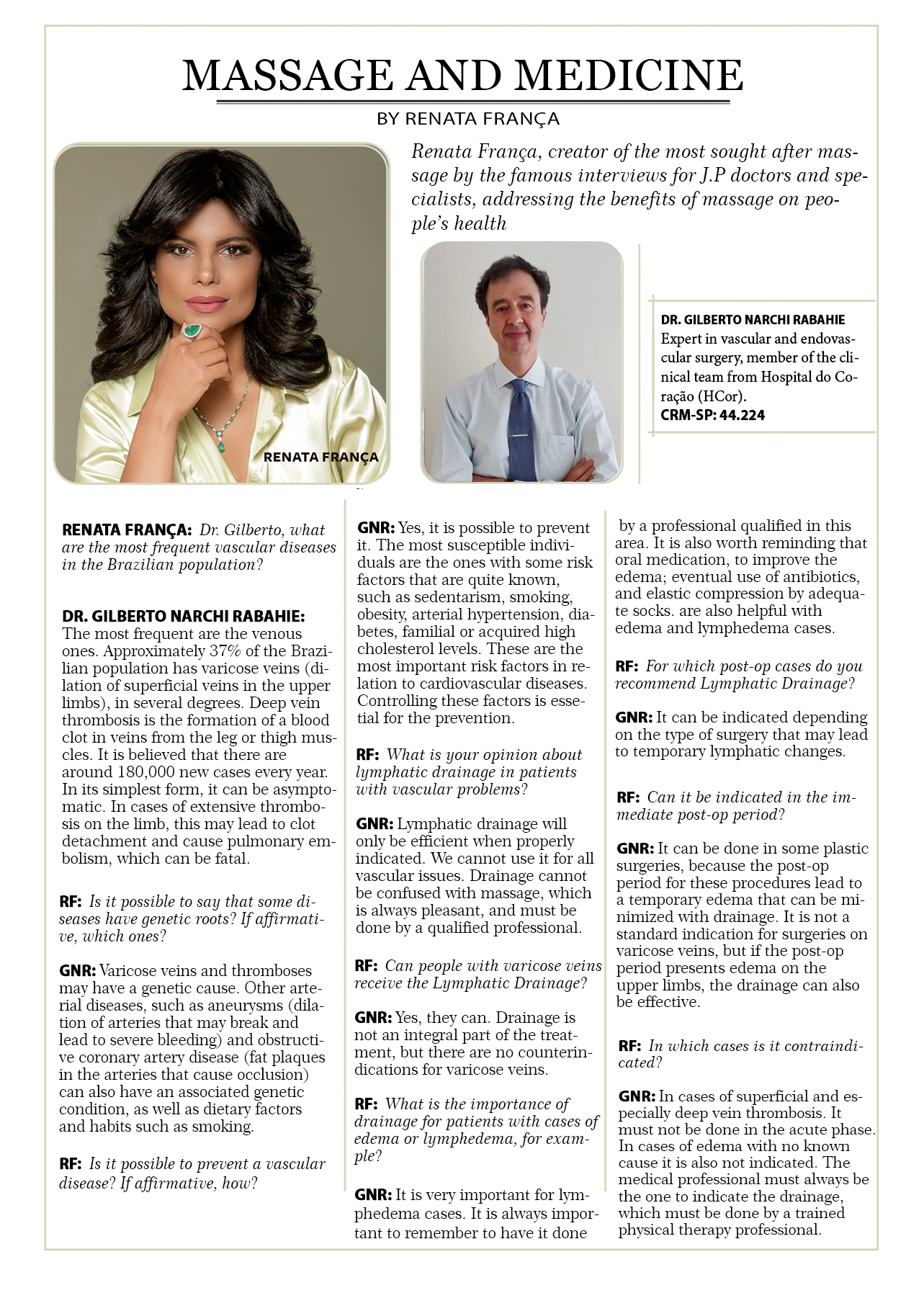
Gilberto Narchi Rabahie
Expert in vascular and endovascular surgery, member of the clinical team from Hospital do Coração (HCor). CRM: 44.224
1. Dr. Gilberto, what are the most frequent vascular diseases in the Brazilian population?
The most frequent are the venous ones. Approximately 37% of the Brazilian population has varicose veins (dilation of superficial veins in the upper limbs), in several degrees. Deep vein thrombosis is the formation of a blood clot in veins from the leg or thigh muscles. It is believed that there are around 180,000 new cases every year. In its simplest form, it can be asymptomatic. In cases of extensive thrombosis on the limb, this may lead to clot detachment and cause pulmonary embolism, which can be fatal.
2 Is it possible to say that some diseases have genetic roots? If affirmative, which ones?
Varicose veins and thromboses may have a genetic cause. Other arterial diseases, such as aneurysms (dilation of arteries that may break and lead to severe bleeding) and obstructive coronary artery disease (fat plaques in the arteries that cause occlusion) can also have an associated genetic condition, as well as dietary factors and habits such as smoking.
3 Is it possible to prevent a vascular disease? If affirmative, how?
Yes, it is possible to prevent it. The most susceptible individuals are the ones with some risk factors that are quite known, such as sedentarism, smoking, obesity, arterial hypertension, diabetes, familial or acquired high cholesterol levels. These are the most important risk factors in relation to cardiovascular diseases. Controlling these factors is essential for the prevention.
4 What is your opinion about lymphatic drainage in patients with vascular problems?
Lymphatic drainage will only be efficient when properly indicated. We cannot use it for all vascular issues. Drainage cannot be confused with massage, which is always pleasant, and must be done by a qualified professional.
5 Can people with varicose veins receive the Lymphatic Drainage?
Yes, they can. Drainage is not an integral part of the treatment, but there are no counterindications for varicose veins.
6 What is the importance of drainage for patients with cases of edema or lymphedema, for example?
It is very important for lymphedema cases. It is always important to remember to have it done by a professional qualified in this area. It is also worth reminding that oral medication, to improve the edema; eventual use of antibiotics, and elastic compression by adequate socks. are also helpful with edema and lymphedema cases.
7 For which post-op cases do you recommend Lymphatic Drainage?
It can be indicated depending on the type of surgery that may lead to temporary lymphatic changes. Can it be indicated in the immediate post-op period?
8 It can be done in some plastic surgeries, because the post-op period for these procedures lead to a temporary edema that can be minimized with drainage. It is not a standard indication for surgeries on varicose veins, but if the post-op period presents edema on the upper limbs, the drainage can also be effective.
9 In which cases is it contraindicated?
In cases of superficial and especially deep vein thrombosis. It must not be done in the acute phase. In cases of edema with no known cause it is also not indicated. The medical professional must always be the one to indicate the drainage, which must be done by a trained physical therapy professional.


